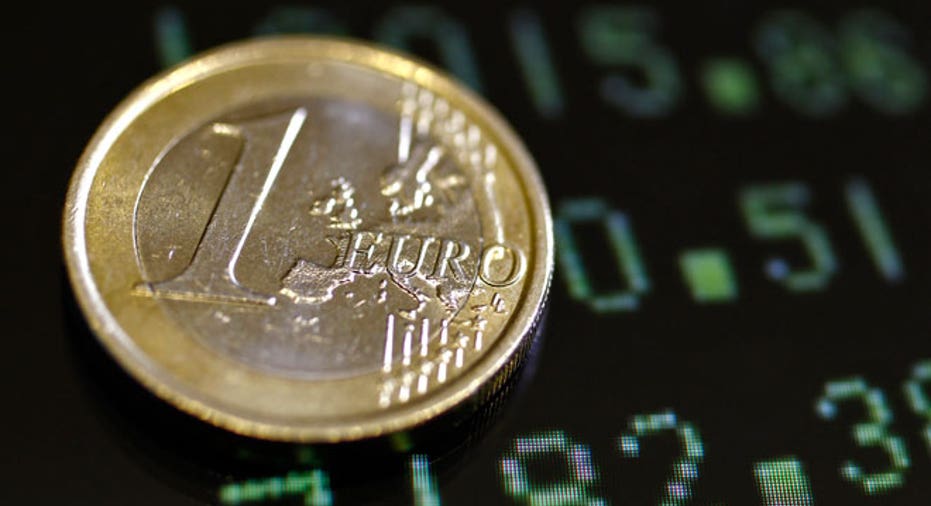Cyprus Fallout: Eurozone Still Making Up Rules on the Fly

Global financial markets were spooked on Thursday by comments from the leader of the Eurogroup that suggested the chaotic and controversial bailout of Cyprus could serve as a prototype for future rescues in the eurozone.
While the comments were later walked back, the violent market reaction underscores how nearly four years after the eurozone sovereign debt crisis first began in Greece, European policymakers are still making up the rules as they go, much to the dismay of investors.
“They’re trying to make the reform little bit by little bit. The risk there is that these incremental changes get overtaken by events,” said Jack Goldstone, senior fellow at George Mason University. “There’s always something that creeps up in the absence of a comprehensive agreement.”
The tiny country of Cyprus seemed to creep up on Europe, going from a little-known banking center to a front-page story that captivated investors around the world almost overnight.
"When someone screams fire, you don’t want to shut the exit.”
Cyprus created an uproar by initially giving in to pressure from creditors to raise 5.8 billion euros by tapping insured and uninsured deposits alike. Eventually Cypriot lawmakers rejected the measure and leaders in Europe insisted such a deposit levy wouldn’t be imposed elsewhere because Cyprus is a special case.
Template or Not?
After Cyprus secured a 10 billion euro bailout over the weekend, Jeroen Dijsselbloem, the head of the region’s finance ministers, seemed to suggest to Reuters on Monday that the island country’s rescue could serve as a template for future deals, even by taxing depositors.
“If there is a risk in a bank, our first question should be 'Okay, what are you in the bank going to do about that? What can you do to recapitalize yourself?'” he told Reuters. “If the bank can't do it, then we'll talk to the shareholders and the bondholders, we'll ask them to contribute in recapitalizing the bank, and if necessary the uninsured deposit holders.”
Global markets tumbled on the headlines, highlighted by a 1% decline for the euro against the U.S. dollar and a 2.50% selloff for the Italian benchmark index.
Italian banks took the brunt of the damage, with shares of UBI Banca and UniCredit being halted. Rome-based UniCredit closed down 5.81%, while Intesa Sanpaolo tumbled 6.21%.
“You don’t say we just had this wonderfully botched experience but we should use that as a template for the rest of Europe. I think that’s rather irresponsible,” Axel Merk, president and CIO of Merk Investments, told FOX Business. “When someone screams fire, you don’t want to shut the exit.”
Marc Chandler, global head of currency strategy at Brown Brothers Harriman, said the comments “took away any solid ground to stand on,” but warned the markets may be reading too much into the comments.
Dijsselbloem later walked back the comments, saying bailouts are “tailor-made” to individual countries and no “models or templates are used.” He said Cyprus is a “specific case with exceptional challenges which required the bail-in measures.”
Writing the Rules Mid-Crisis
All of this highlights how, unlike in the U.S., which just went through its worst banking crisis since the Great Depression, the playbook on resolving and recapitalizing eurozone banks remains largely unwritten and subject to change. The currency bloc still lacks a formal banking union.
“They’re having to make the rules as the crises develop,” said Jan Randolph, director of sovereign risk at IHS Global Insight. “In America you’ve got well tested and clear bankruptcy legislation. It’s all been well documented. Everyone knows who’s in the queue. That’s less defined in European banking.”
New rules on winding down banks were enacted by the 2010 Dodd-Frank reform law, parts of which are still being implemented by regulators.
“Whenever you have a banking crisis, the banking rules get rewritten. It’s pretty normal that a crisis leads to changes,” said Goldstone.
However, he noted that what is striking in Europe is how policymakers are not trying to revise their rules all at once, choosing instead to make reforms step by step.
Protecting Creditor Taxpayers
So what lessons can investors take away from the Cyprus bailout and confusing fallout?
“I think Europe’s institutional arrangement has evolved,” said Chandler. “In future bank bailouts, there will be a broader involvement of stakeholders.”
Randolph said it now appears that money from the ESM bailout fund can only be accessed after the following groups take hits: bank shareholders, junior and senior unsecured bondholders, senior secured bondholders and depositors over 100,000 euros.
The last two groups mark a departure for the eurozone and are “now placed clearly ahead of the sovereign,” said Randolph. “What they’re doing is building layers of protection to the Dutch and German taxpayers. The ESM is being kept well back.”
It’s important to note that at this stage of the crisis there aren’t many other countries which haven’t already been bailed out that would even fit within the Cyprus template. That’s because few countries other than perhaps Luxembourg have a banking system relative to gross domestic product that is on par with the oversized Cypriot system.
Still, the latest bailout playbook seems to put private capital firmly ahead government funds in the event of a solvency issue, meaning investors and depositors may pay closer attention to banks’ health.
“While this is good for moral hazard, it may mean ultimately that [eurozone] banks will have to more clearly demonstrate than before” that they “have more than enough capital,” said Randolph.
As this process runs its course, Goldstone said he’s worried about “a run as large depositors start to pull money out of banks that look a little shaky.”